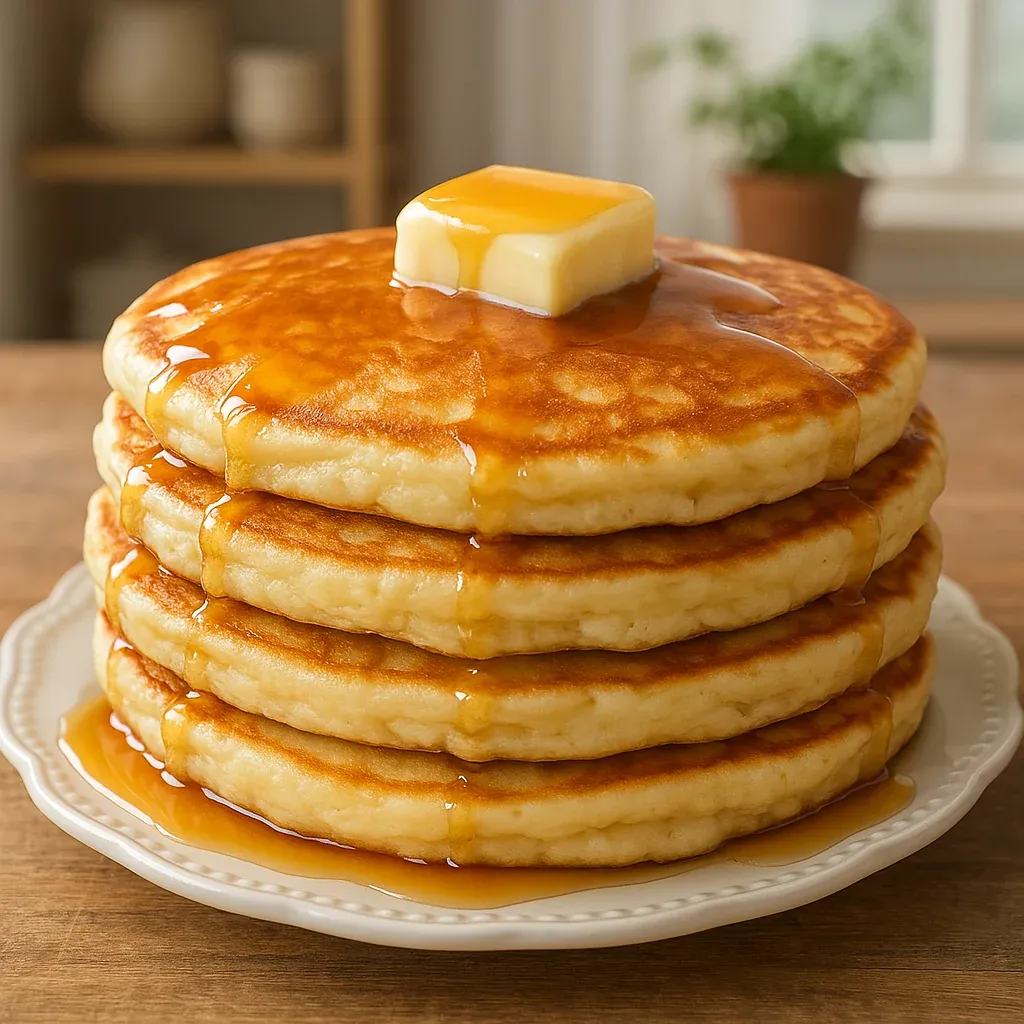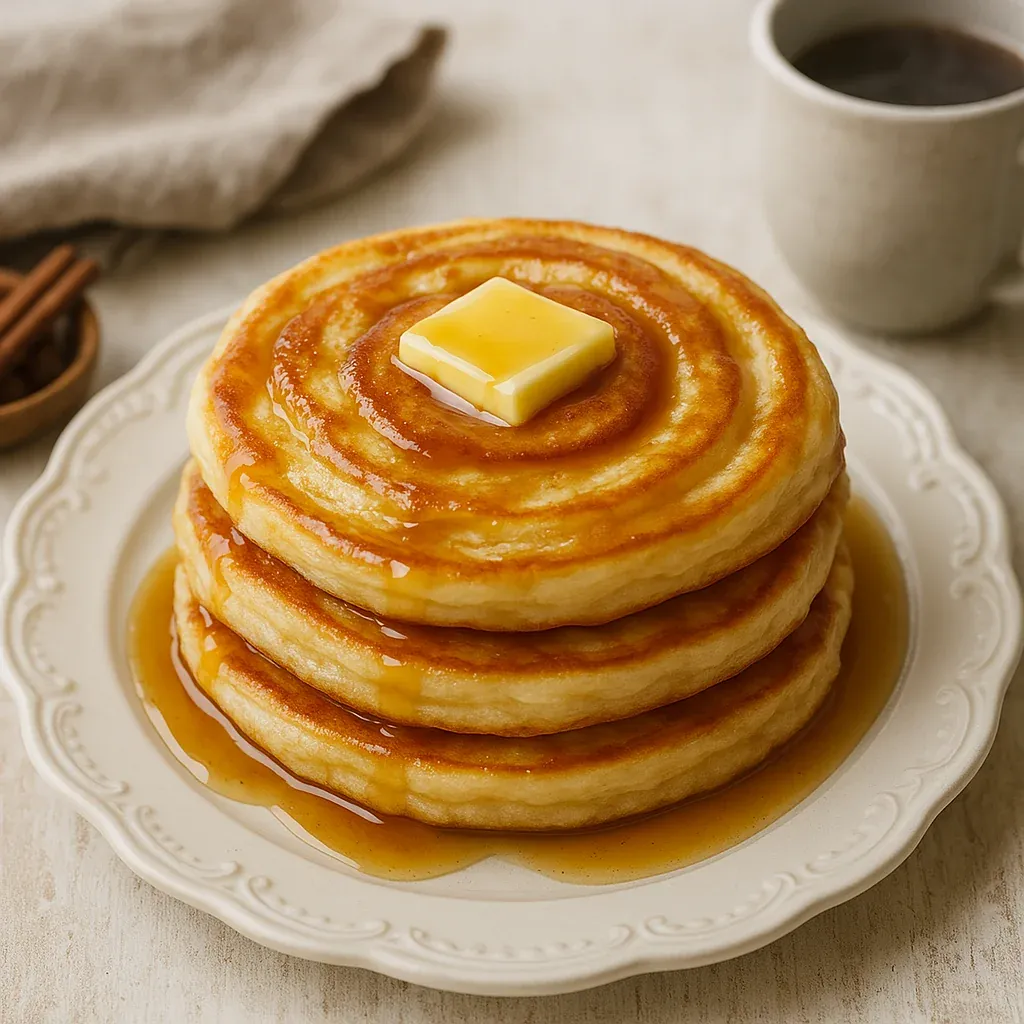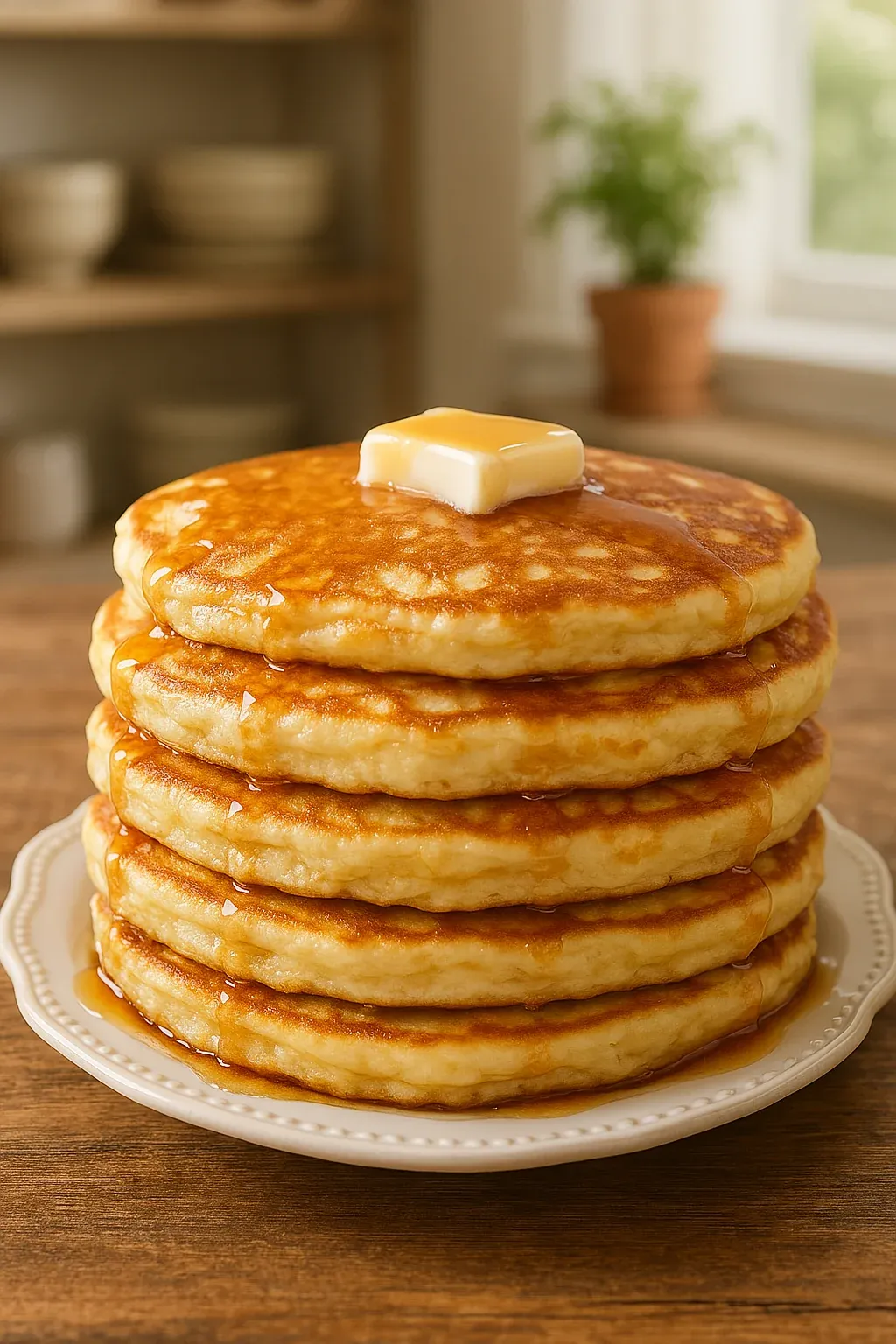 Pin
Pin
This buttermilk pancake recipe transforms ordinary mornings into something special with its perfectly fluffy texture and rich flavor. After years of disappointing results from box mixes, I developed this foolproof method that delivers restaurant-quality pancakes right in your kitchen.
I first made these pancakes for my family on a lazy Sunday morning, and they've become our weekend tradition ever since. The look on my children's faces when that first perfectly golden stack hit the table told me this recipe was something special.
Ingredients
- All purpose flour: Ensures the perfect texture. Use unbleached for best flavor
- Sugar: Adds just enough sweetness without overpowering. I prefer regular granulated
- Baking powder: Provides the primary lift. Check that yours is fresh for maximum fluffiness
- Baking soda: Reacts with buttermilk creating those perfect air bubbles inside
- Salt: Enhances all flavors. Use fine sea salt if available
- Buttermilk: Creates tenderness and tang. Full fat works best for richness
- Eggs: Bind everything together. Room temperature incorporates more easily
- Vanilla extract: Adds warmth and depth. Use pure not imitation
- Unsalted butter: Adds richness. European style has higher fat content for extra flavor
Step-by-Step Instructions
- Mix Dry Ingredients:
- Whisk together flour, sugar, baking powder, baking soda, and salt in a large bowl until thoroughly combined. This even distribution ensures consistent leavening throughout your pancakes. Take care to break up any small clumps of baking powder or soda which could create bitter spots.
- Combine Wet Ingredients:
- In a separate medium bowl, whisk buttermilk, eggs, and vanilla extract until smooth and well blended. The separation of wet and dry ingredients prevents overmixing which leads to tough pancakes. Make sure eggs are fully incorporated with no streaks of white visible.
- Add Melted Butter:
- Slowly drizzle melted butter into wet ingredients while constantly whisking. This technique prevents the butter from solidifying when it hits the cold buttermilk. If some separation occurs, continue whisking until reasonably combined. The small butter pieces will melt during cooking.
- Create The Batter:
- Pour wet ingredients into dry ingredients and gently fold with a wooden spoon until just combined. Stop mixing when a few flour streaks remain visible. This gentle approach preserves air bubbles that contribute to fluffiness. Allow batter to rest about 5 minutes while heating your pan.
- Preheat The Pan:
- Place a nonstick skillet over medium low heat and spray lightly with cooking spray or brush with oil. The pan is ready when you can feel heat radiating from the surface when holding your hand a few inches above. Proper preheating ensures even browning without burning.
- Cook First Side:
- Pour approximately one half to two thirds cup batter onto the heated surface. The batter should spread slowly into a circle about 4 inches across. Watch for bubbles to form and edges to appear set, which usually takes about 2 to 3 minutes.
- Flip And Finish:
- Using a thin spatula, carefully flip the pancake when bubbles across the surface begin to pop and leave holes. The underside should be golden brown. Cook the second side for 1 to 2 minutes more until golden and the center springs back when lightly touched.
- Repeat And Serve:
- Continue the process with remaining batter, adjusting heat as needed if pancakes brown too quickly or slowly. Serve immediately topped with butter and warm maple syrup for the best flavor and texture experience.

My favorite part of this recipe is the buttermilk itself. I discovered its magic when desperate for pancakes one morning and only had some leftover buttermilk from a baking project. The resulting pancakes were so much better than my standard recipe that I never went back. Now I always keep buttermilk in my fridge just for weekend pancakes.
The Perfect Consistency
The batter for these pancakes should be thick but pourable, similar to honey or molasses. If your batter seems too thick, add buttermilk one tablespoon at a time until it reaches the right consistency. Too thin, and you can add a small amount of flour. This consistency is crucial because it allows the pancakes to rise properly while cooking rather than spreading too thinly across the pan.
Buttermilk Substitutes
No buttermilk on hand? You can make a quick substitute by adding one tablespoon of lemon juice or white vinegar to regular milk and letting it sit for five minutes. However, this homemade version is thinner than commercial buttermilk, so add it gradually to avoid overly thin batter. The tanginess will be similar, but the texture might be slightly less rich. For best results, add the substitute milk slowly until you achieve the proper consistency shown in the photos.

Storage And Reheating
These pancakes stay fresh in the refrigerator for up to three days in an airtight container. To freeze, place cooled pancakes in a single layer on a baking sheet until frozen solid, then transfer to a freezer bag with parchment paper between layers. They keep for up to two months frozen. Reheat refrigerated pancakes in the microwave for 20 seconds or frozen ones for 60 seconds. For crispier edges, toast briefly or warm in a 350°F oven for 5 minutes.
Recipe FAQs
- → How do I make buttermilk if I don’t have it?
Mix 1 tablespoon of lemon juice or white vinegar with 1 cup of milk. Let it sit for 5-10 minutes before using. However, the batter might turn out thinner compared to regular buttermilk.
- → What should I do to avoid flat pancakes?
Do not overmix your batter. Stir gently until just combined, leaving a few streaks of flour visible. Overmixing can result in dense, flat pancakes.
- → Which pan is best for cooking pancakes?
A non-stick skillet is ideal for even cooking and preventing sticking. Preheat the pan on medium-low heat before adding the batter.
- → How do I know when it’s time to flip the pancakes?
Wait until edges start to set and small bubbles form and burst on the surface. Use a spatula to flip and cook until both sides are golden brown.
- → Can I substitute any ingredients in this recipe?
You can experiment with whole wheat flour for part of the all-purpose flour, but adjust the buttermilk as whole wheat flour tends to absorb more liquid. Butter can also be replaced with neutral oil if needed.
